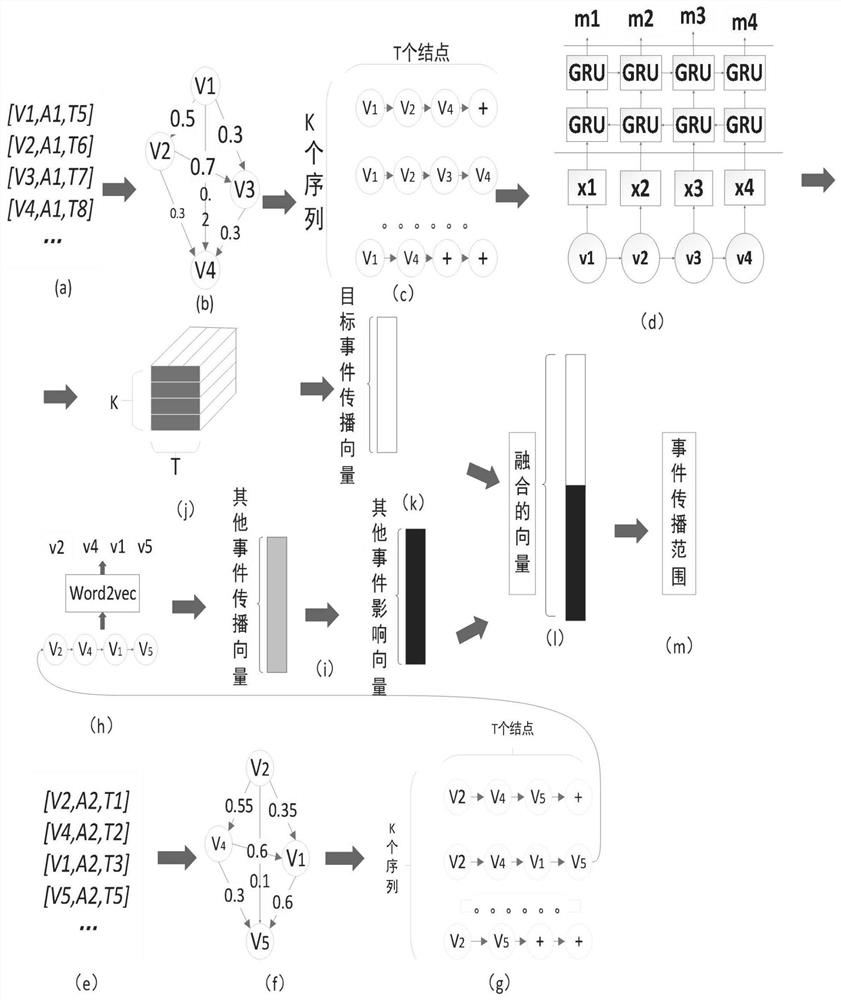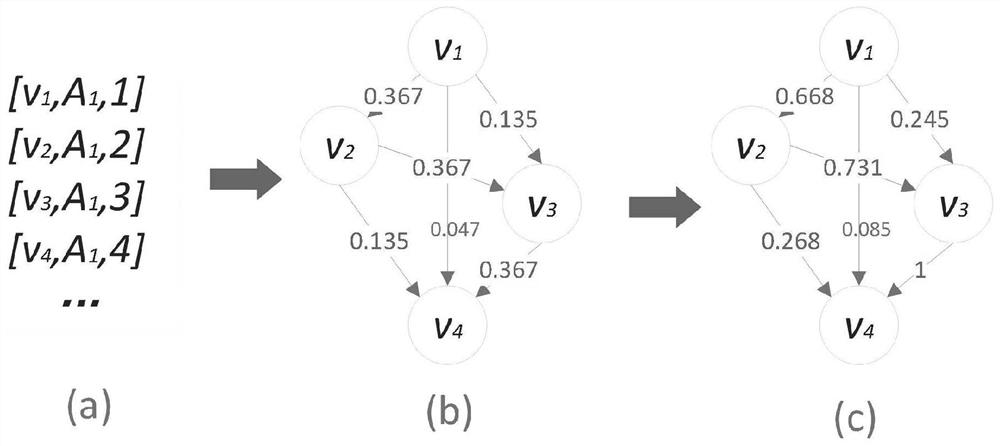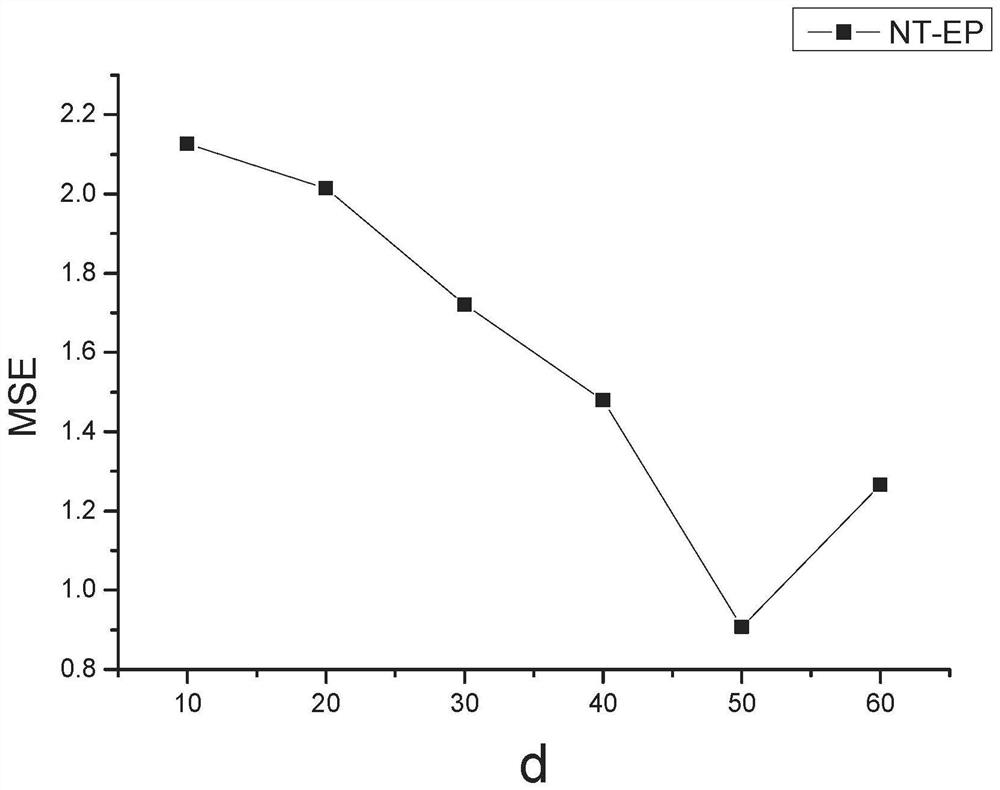A topology-free method for predicting the propagation range of social messages
A prediction method and message technology, which is applied in the field of social message propagation range prediction, can solve the problem of not considering the mutual influence of messages, and achieve the effect of improving accuracy
- Summary
- Abstract
- Description
- Claims
- Application Information
AI Technical Summary
Problems solved by technology
Method used
Image
Examples
specific Embodiment approach 1
[0047] Embodiment 1: The specific process of a method for predicting the dissemination range of social messages without a topology structure in this embodiment is as follows:
[0048] The invention studies the problem of message propagation range prediction under the condition of no topology structure, and proposes a topology-free message propagation range prediction method NT-EP. The method consists of 4 parts: (1) Construct a weighted propagation graph for each message by using the characteristics of message propagation decay with time, use random walk strategy to obtain multiple propagation paths on the propagation graph, and then use the word2vec method to calculate each message. (2) Replace the propagation path of the target message with the user's feature vector sequence and input it to the bidirectional gated recurrent neural network (Bi-GRU), and combine the attention mechanism to calculate the propagation feature vector of the target message; ( 3) Considering the poss...
specific Embodiment approach 2
[0060] Embodiment 2: The difference between this embodiment and Embodiment 1 is that in step 1, a weighted propagation graph is constructed for each message according to the propagation time difference in the message action log, as shown in the following example: figure 1 shown in (a) and (b). The numbers on the side of the propagation graph represent the probability of influence between users. After the propagation graph is constructed, a random walk method is used to extract several possible propagation paths of the message from the propagation graph, such as figure 1 As shown in (c); the specific process is:
[0061] Propagation path selection
[0062] A given action log usually sorts the actions of each message by propagation time, as in figure 2 shown in (a). User V 1 Message A was received at time 1 1 , user V 2 Message A was accepted at time 2 1 , . . . The true propagation trajectory of the message cannot be obtained from the given action log. Because the rea...
specific Embodiment approach 3
[0071] Embodiment 3: The difference between this embodiment and Embodiment 1 or 2 is that in the second step, the word2vec method is used to calculate the initial feature vector of each target user on the propagation path of the message; the specific process is:
[0072] After extracting the propagation paths of all messages, each propagation path is regarded as a sentence, and each user on the path is regarded as a word in the sentence, and input to word2vec [23] (Le Q, Mikolov T. Distributed representations of sentences and documents[C] / / International conference on machine learning. 2014:1188-1196.) In the skip-gram model, the initial feature vector of each target user is obtained; assuming that the user's initial The dimension of the feature vector is H.
[0073] Other steps and parameters are the same as in the first or second embodiment.
PUM
 Login to View More
Login to View More Abstract
Description
Claims
Application Information
 Login to View More
Login to View More - R&D
- Intellectual Property
- Life Sciences
- Materials
- Tech Scout
- Unparalleled Data Quality
- Higher Quality Content
- 60% Fewer Hallucinations
Browse by: Latest US Patents, China's latest patents, Technical Efficacy Thesaurus, Application Domain, Technology Topic, Popular Technical Reports.
© 2025 PatSnap. All rights reserved.Legal|Privacy policy|Modern Slavery Act Transparency Statement|Sitemap|About US| Contact US: help@patsnap.com



